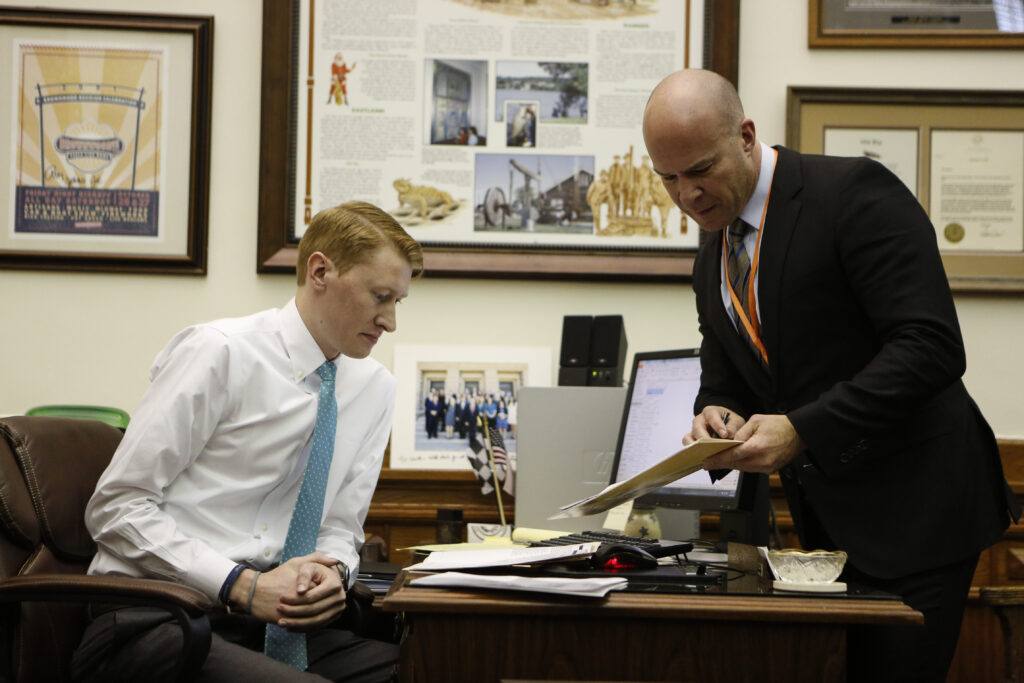Every two years, the TCEA Board of Directors adopts their legislative priorities. In order to arrive at these priorities, they survey the members, look at relevant research, and review what other states are doing. These priorities are designed to help school districts provide a more personalized education for their students by enabling teachers to customize the content, timing, location, and delivery of instruction that best meets each student’s instructional needs. This goal has been a laudable goal of educators for years, but the ability to differentiate instruction for each student has been difficult to achieve. Technology has advanced to the point where this is now possible.

Every industry and economic enterprise in the world has used technology to completely transform the way they conduct business. The TCEA board’s priorities address six core areas we feel can assist school districts to leverage technology in the same way.
An overview of the recommended strategies are listed below. You can find a detailed list of the board’s priorities on the TCEA website.
Leadership and Planning
Leadership is critical to enacting a change of this magnitude. This will require a well-thought-out plan that includes student outcomes, professional learning, curriculum and instructional materials, digital devices, broadband, and policies that enable a district to allow students to move at their own pace.
Recommendations:
- Create a Digital Learning Task Force that will help implement the Long-Range Plan for Technology.
- Establish a grant program to enable districts to reach the goals in the state’s LRPT.
Professional Learning
 In order to accomplish the goals established in our priorities, it is imperative that teachers have a supportive environment in which to adapt their teaching strategies to take advantage of empowering technologies. Teachers recognize the benefits of the use of technology, but don’t always know how and when to use the different technologies that are available. This is why TCEA believes strongly that teachers need ongoing, job-embedded professional learning opportunities that empower them to use appropriate
In order to accomplish the goals established in our priorities, it is imperative that teachers have a supportive environment in which to adapt their teaching strategies to take advantage of empowering technologies. Teachers recognize the benefits of the use of technology, but don’t always know how and when to use the different technologies that are available. This is why TCEA believes strongly that teachers need ongoing, job-embedded professional learning opportunities that empower them to use appropriate
technology tools to meet various educational needs.
Recommendations:
- Support educators with ongoing, job-embedded professional development on the use of technology to enhance instruction.
- Ensure that teachers who receive micro-credentials for skills that meet the demands of the digital classroom are recognized as continuing professional education requirements by SBEC.
Technology and Instructional Materials Allotment
In 2011, the state legislature created an allotment that provides funding for both instructional materials and technology. This dual purpose fund was designed to help districts transition to an increased use of digital instructional materials. Since the inception of the TIMA, only 13 percent of the allotment has been used to purchase technology (TIMA Expenditure Report). This has made It difficult for districts to initiate and sustain broad-based technology implementations. TCEA is firmly supportive of local-control, which is why our approach has been to provide districts with more information about available instructional materials, support the use of Open Education Resources, and work with the SBOE in limiting the size of the instructional materials proclamations.
Recommendations:
- Provide districts with more guidance on the merits of Open Education Resources and continue to allocate funding for OER aligned to state curriculum standards.
- Track a district’s expenditures on technology/digital content and tools to identify trends.
- The SBOE should evaluate a school district’s needs for instructional content and technology and ensure that any proclamation not exceed 75 percent of the TIMA.

Technology Proficiency
TCEA was founded in 1980 by teachers who were interested in teaching students how to use a computer. Equipping students with the necessary skills to function in the e-economy is central to our mission. This is why we are alarmed that Texas eighth grader’s technology proficiency has declined by ten percent between 2013-2018 (source: Learning.com Texas – TCEA 8th Grade TA-TEKS Assessment).
There is a false belief that today’s students know how to use technology because they are able to connect with their peers via Snap Chat and Instagram. Students may know how to take a pic and send it to their friends, but may not be able to leverage technology to help them analyze and evaluate information in order to create and produce something new. TCEA believes that all Texas students should have computational thinking skills that will enable them to be both users and creators of computing technology.
Recommendations
- Move the high school Technology Application courses into the CTE curriculum, aligning and removing similar courses.
- Update the K-8 Technology TEKS to include computational thinking and coding skills.
- Increase the number of students taking a course that exposes them to computer science or computer programming.
- Provide additional funding for professional development to increase the number of teachers who can teach computer science courses.
Broadband
Texas has come a long way in meeting the FCC’s minimum goal of 100 kbs per student and access to fiber. The average cost of broadband has also dropped in recent years. However, we have not fully reached the goal of having scalable and affordable broadband for all students both at school and home. Students in districts without adequate broadband capacity or who have limited access to digital devices and tools are at a distinct disadvantage today. Not only do they have fewer options in terms of access to content, they are unable to develop the technical skills associated with navigating the internet and creating knowledge online.
Recommendations
- Designate a state entity that will identify existing barriers to providing scalable broadband access both at school and in students’ homes and administer a plan to address these barriers.
- Provide funding for the state E-rate match and for WiFi access within school classrooms.
- Maximize the Technology Lending Grants in order to assist with home access.
Personalized Learning
 Every student has distinct learning needs, interests, and aspirations. Up until recently, it was extremely difficult to tailor the instructional strategies to meet each student’s needs. Technology can be an enabler of this type of educational model. It allows students to guide their inquiry as they decide how they will interact with the content, including the time and location. This type of learning requires a major shift in the delivery of instruction and involves teacher professional learning, a robust technical infrastructure, the selection of appropriate content, and strong leaders who know how to manage this type of change. Many of the strategies listed above support the goal of personalized learning; however, there are a few that have not yet been addressed.
Every student has distinct learning needs, interests, and aspirations. Up until recently, it was extremely difficult to tailor the instructional strategies to meet each student’s needs. Technology can be an enabler of this type of educational model. It allows students to guide their inquiry as they decide how they will interact with the content, including the time and location. This type of learning requires a major shift in the delivery of instruction and involves teacher professional learning, a robust technical infrastructure, the selection of appropriate content, and strong leaders who know how to manage this type of change. Many of the strategies listed above support the goal of personalized learning; however, there are a few that have not yet been addressed.
Recommendations
- Allow students to receive credit based on the mastery of the content, not seat time.
- Provide additional funding for blended learning initiatives such as the Math Innovation Zone.
- Increase the number of students taking TxVSN courses.
Conclusion
The legislative priorities are designed to give TCEA staff guidance on what legislation the association should pursue. If you are interested in finding out more and you are a member, make sure you join the Advocacy group in our social community. If you aren’t a member, consider joining so that you can get involved and help advocate for our teachers and students.
Credits
Photos of the Texas Capitol by Spencer Selvidge
Computer code photo by Markus Spiske on Unsplash
Student smiling photo by Oluwakemi Solaja on Unsplash


2 comments
These are wonderful initiatives, but a major priority for teachers is a pay increase that reflects our education, skills, experience, and time we have committed to the profession. We need legislators to support teaching as a profession and help fund districts to pay teachers higher incomes to keep them in the profession and to allow cost-of-living increases, as well. Our dependency on taxpayers to vote for property taxes to fund our salaries is insufficient. Basically, we are hired by the administration at a school, but we must appeal to our tax-payers to ensure we have funding for raises, despite the fact that many of us cannot even afford to live in the districts in which we teach (so we have no voting voice ourselves). Please consider legislative options to support teachers’ livelihoods that are not directly dependent on property tax voted increases, particularly in an era when voting turnout is often substantially low.
Lisa,
Thank you for your thoughtful reply. We are in complete agreement with you on the issues you raised. We will support any measures that address your stated concerns when they come up next session. The board’s legislative priorities reflect the mission of TCEA which is to advance teaching and learning through the use of technology. However, the board and the TCEA staff will advocate for a broader range of educational issues if we feel they will positively impact Texas schools.
Jennifer